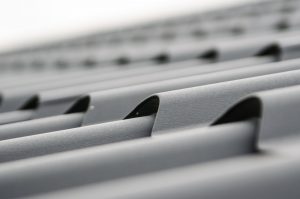Energy efficiency comes in all shapes and sizes. We frequently talk of how to be more efficient with our lighting, heating, cooling and even appliances. We don’t often talk about the roof. Being a homeowner requires lots of choices to be made whether you are building a home or repairing or replacing products in your current home.
When considering roofing materials you need to take into account the climate for your area and what efficiency features are important to you. Some roofing material options are shingles, metal roofing, slate, or tile. No matter what your choice is, you can look for the Energy Star rating on certain products.
Roofs can get pretty hot with the sun beating on them. This can make upper floors of homes and buildings very hot. Some roofing materials are now made to do a better job of reflecting the sun’s heat which will in turn keep what’s underneath cooler.
Here are some energy efficient types of roofing:
- Metal roofing is one of the BEST choices you can make! These roofs, when properly installed, can last up to 50 years. They are wind and bad weather resistant and fireproof. They are light so your building supports are bearing less load. This style roof comes in many colors and styles.
- Tile roofing is insulation perfection. Underneath the tiles air can circulate and conserve energy. Tile can stand up against hail and storms. This style roof also lasts many years, is fire resistant and also comes in a variety of colors and styles.
- Shingle roofing such as the asphalt shingles are not always energy efficient. The energy efficient shingles are made a little differently and can make a 100 degree difference on your roof’s surface. This makes a big difference inside the building too. Asphalt shingles are the most cost effective roofing system on the market. These shingles also help with sound penetration so outside noise will be less with this type of roof.
- Slate roofs are fire and mold resistant. Slate roofs are very resistant to frost damage and breakage due the low water absorption.
Ventilation and insulation is something else that is essential to consider. You need proper ventilation so air can circulate through attic spaces. To properly vent air you should have vents that allow air in as well as allowing air to exit. To optimize your energy efficiency you also need insulation. In the winter, insulation will keep your heat from rising to the attic and in the summer insulation keeps the heat in the attic out of your home.
Sometimes roofing comes with a tax credit to the homeowner. Check with your local installer for more information.


